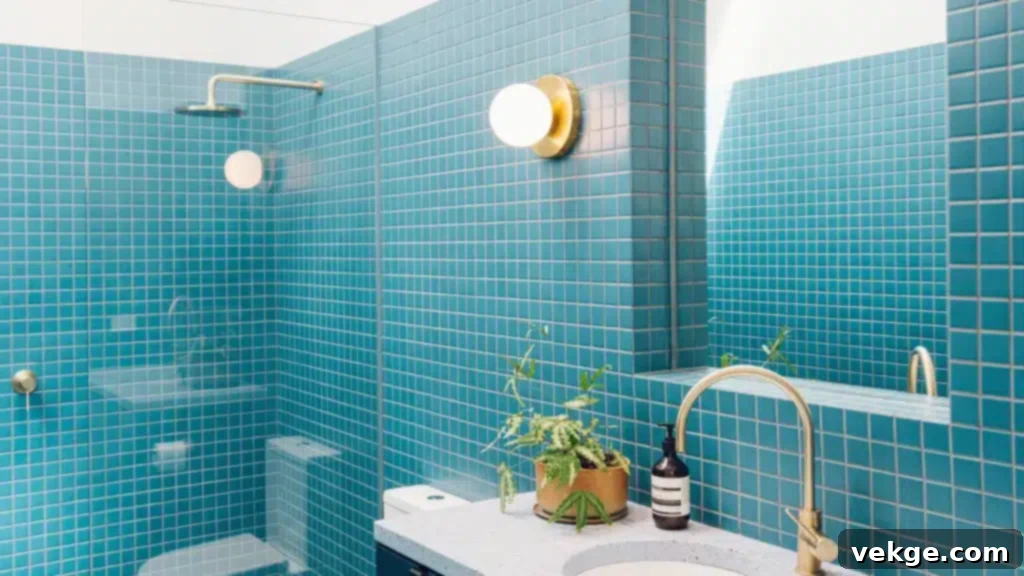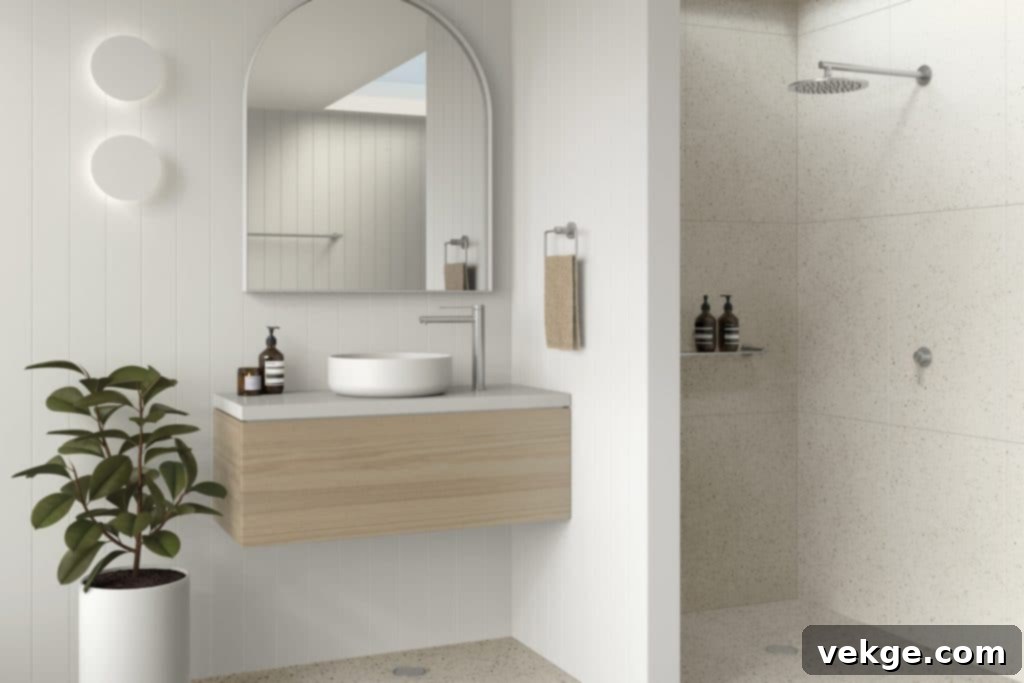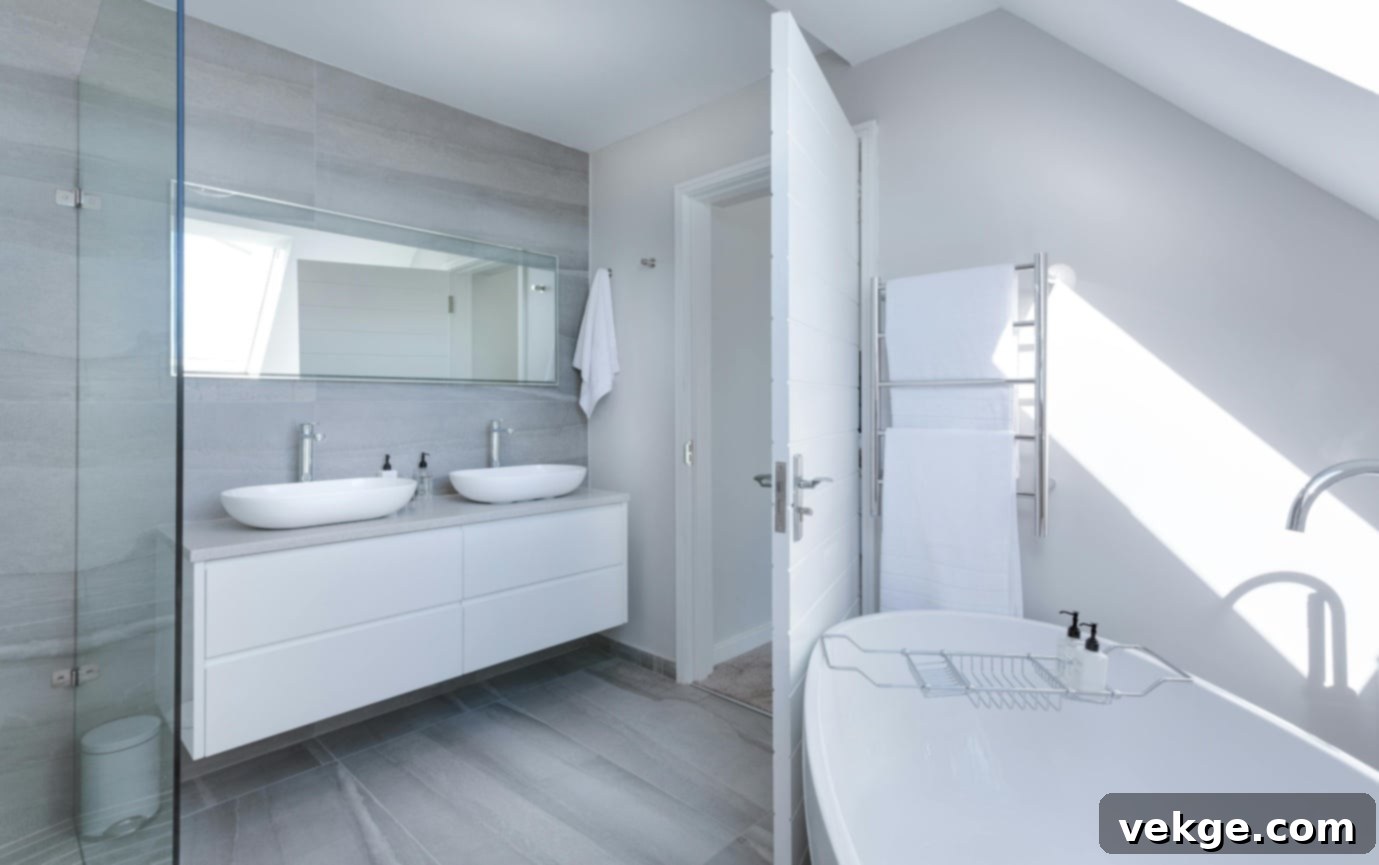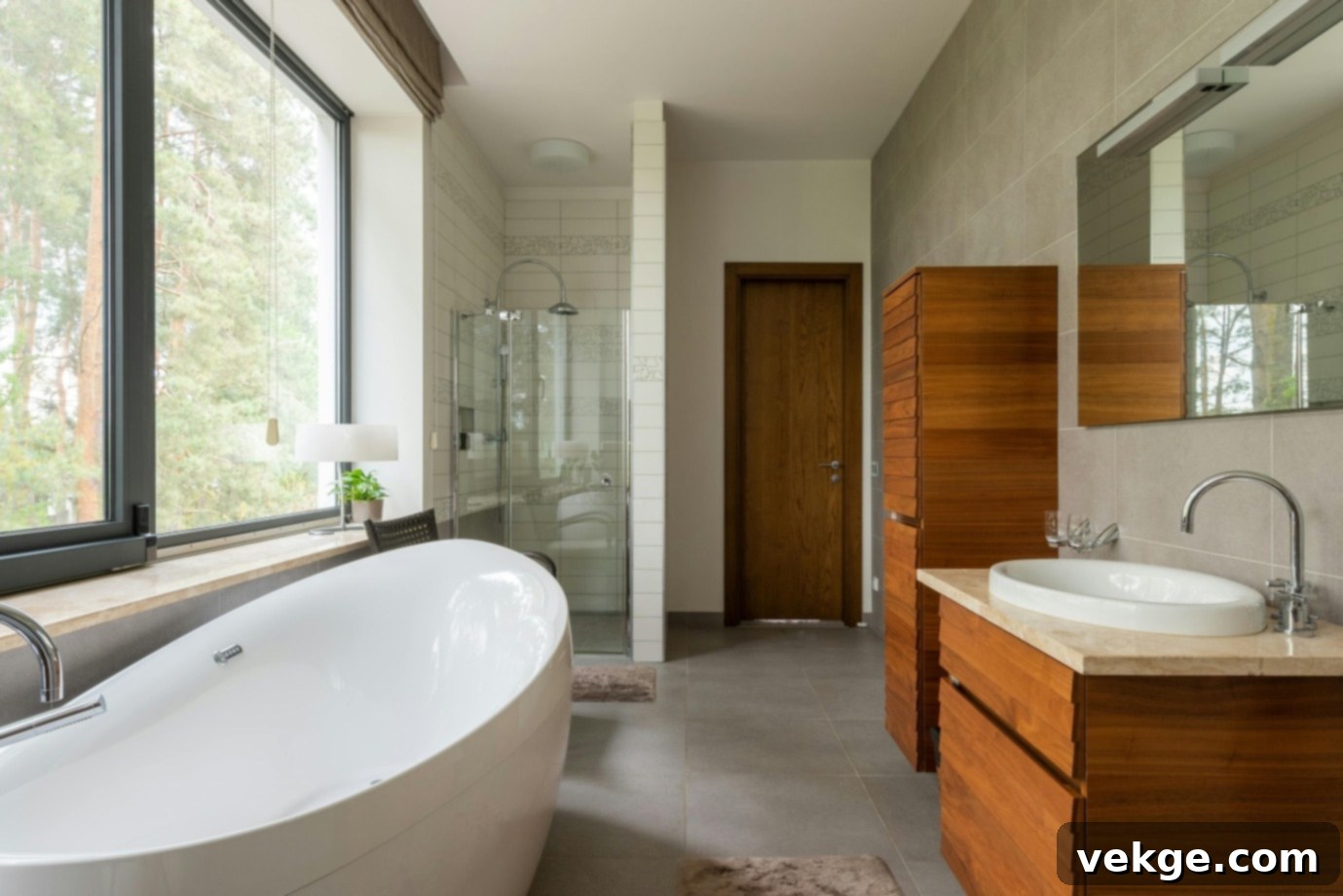Essential Guide to Bathroom Renovations: Avoiding Common Mistakes for a Perfect Space
Bathroom renovations offer incredible opportunities to transform an outdated space, introduce modern functionalities, and significantly enhance your home’s overall value and appeal. However, the journey from conception to completion can be complex. With countless decisions to make, from selecting the perfect tiles and fixtures to navigating intricate plumbing and electrical work, it’s surprisingly easy for crucial details to slip through the cracks during the planning and execution phases. Overlooking these essential elements can lead to a cascade of problems, including frustrating functional mishaps, unexpected costly repairs, and ultimately, a finished bathroom that falls short of your vision and fails to serve its intended purpose.
To ensure your bathroom renovation project is a resounding success, delivering a space that is both beautiful and highly functional, it’s vital to be aware of potential pitfalls. This comprehensive guide delves into the most common mistakes homeowners frequently encounter during their bathroom remodeling journey and provides actionable, expert advice on how to effectively avoid them, paving the way for a smooth and rewarding transformation.
Understanding Bathroom Renovations: More Than Just a Facelift

At its core, a bathroom renovation is the process of remodeling, updating, or completely transforming a bathroom space to improve its aesthetics, functionality, and overall comfort. This multifaceted process often involves a wide array of activities, including but not limited to: repainting walls, replacing outdated fixtures like sinks, toilets, and showers, altering the room’s layout to optimize space, installing new plumbing and electrical systems, upgrading flooring and wall finishes, and incorporating smart home technologies.
Homeowners undertake these renovations for a multitude of reasons, each driven by specific needs, desires, and budget considerations. Some of the most common motivations for embarking on a bathroom remodel include:
- Modernization: Many bathrooms simply become dated over time, featuring worn-out materials, faded finishes, and antiquated fixtures. A renovation breathes contemporary style into the space, aligning it with current design trends and personal tastes.
- Improved Functionality: This often involves re-imagining the bathroom layout to better accommodate the inhabitants’ needs. This could mean adding a spacious walk-in shower, installing a convenient double vanity for busy mornings, or reconfiguring the space to maximize storage and efficiency.
- Enhanced Accessibility: For individuals with mobility limitations or those planning to age in place, renovations can make a bathroom significantly more accessible. This might involve widening doorways, installing grab bars, incorporating a curbless shower, or adjusting vanity heights.
- Increased Property Value: A well-executed bathroom renovation is one of the smartest investments a homeowner can make. It consistently offers one of the highest returns on investment in terms of increased market value, making your home more attractive to potential buyers should you decide to sell.
While the prospect of these benefits is undoubtedly exciting, the inherent complexity of bathroom renovations also introduces a significant potential for costly mistakes. Given that these projects involve intricate plumbing systems, critical waterproofing, careful design choices, and numerous interconnected fixtures, homeowners must proceed with caution and thorough preparation.
7 Critical Bathroom Renovation Mistakes and How to Master Your Remodel

1. Poor Planning and Budgeting
One of the most common and detrimental mistakes is rushing into a bathroom remodel without a solid plan and a realistic budget. Starting demolition or purchasing materials before having a clear vision and a detailed financial roadmap is a recipe for disaster. This often leads to costly “scope creep,” mismatched design elements, numerous change orders, and ultimately, a finished space that fails to meet expectations or budget constraints.
- How to Avoid This: Dedicate ample time to the planning phase. Begin by creating a detailed vision for your new bathroom, considering both aesthetics and functionality. Sketch out potential layouts, visualizing how traffic will flow and how each element – from a spacious soaking tub to a dual-sink vanity or a luxurious walk-in shower – will integrate into the space. Research different materials, fixtures, and finishes extensively, understanding their pros, cons, durability, and most importantly, their cost implications. Once your plan is solid, develop a comprehensive and realistic budget. This budget should account for every line item: material costs, labor expenses (plumbers, electricians, tilers, general contractors), permit fees (often overlooked!), and a crucial contingency fund of at least 10-20% for unforeseen issues or desired upgrades that may arise during the project. Track your spending meticulously to stay on track.
2. Not Hiring Qualified Professionals
While DIY projects can be rewarding for minor updates, complex bathroom renovations involving plumbing, electrical work, structural changes, or intricate tiling absolutely necessitate the expertise of qualified professionals. Attempting such tasks yourself without proper skills, tools, or knowledge of building codes can lead to dangerous situations, code violations, shoddy workmanship, long-term functional issues, and even significant insurance problems. A professional ensures the work is done safely, correctly, and to the highest standards, saving you headaches and money in the long run.
- How to Avoid This: Invest time in finding a reputable and experienced contractor specializing in bathroom renovations. Seek referrals from friends, family, or online platforms with trusted reviews. Interview several contractors to discuss their experience, project management approach, and estimated timelines. Crucially, verify that they are properly licensed, bonded, and insured. Request a portfolio of their previous work and contact their references. Always obtain detailed written quotes that clearly outline the scope of work, labor costs, material allowances, and a payment schedule. For specific tasks like plumbing and electrical, ensure your general contractor uses or recommends licensed specialists. For instance, reputable bathroom renovations Brisbane companies emphasize using certified tradespeople.
3. Ignoring Existing Plumbing Needs
Neglecting to thoroughly assess the existing plumbing infrastructure or failing to consider future plumbing needs is a common misstep. Ignoring current pipe conditions, water pressure, or drainage capabilities can lead to costly rerouting later on, insufficient water flow for desired fixtures (like multiple showerheads or a powerful rain shower), or an inability to support new features like a bidet or a free-standing tub in a new location. Poor planning here can severely limit your design choices and functionality.
- How to Avoid It: Engage a licensed plumber early in the planning stage. They can evaluate the condition of your current pipes, assess water pressure, and advise on any necessary upgrades or rerouting required for your desired layout. Discuss your vision with them – whether it’s moving a toilet, adding a new sink, or installing a large shower system – so they can ensure the existing plumbing can support these changes or recommend the best solutions for new installations. This foresight prevents costly surprises and ensures your new bathroom operates flawlessly.
4. Selecting Wrong or Unsuitable Materials

The bathroom is a high-moisture environment, making material selection critically important. Choosing materials that are not specifically designed to withstand humidity, water splashes, and frequent cleaning can lead to premature deterioration, mold growth, and safety hazards. For instance, while beautiful hardwood floors might look appealing in a magazine, they are highly susceptible to rot and warping from constant water exposure in a bathroom setting. Similarly, using non-waterproof grout or materials not suitable for wet areas can quickly become a breeding ground for unsightly and unhealthy mold and mildew.
- How to Avoid It: Prioritize durable, water-resistant, and easy-to-clean materials specifically engineered for bathroom environments. For shower walls and floors, invest in high-quality porcelain or ceramic tiles, which are non-porous and highly resistant to moisture and stains. Natural stone countertops like granite or quartz offer superior durability and moisture resistance for vanity tops. For flooring, consider porcelain or ceramic tiles, luxury vinyl tile (LVT), or luxury vinyl plank (LVP), which are excellent water-resistant options that come in a vast array of styles and are easy to maintain. Learn more about the benefits of porcelain tiles here. When making your selections, always balance aesthetics with practical functionality. Choose slip-resistant tiles for shower floors and high-traffic bathroom areas to prevent accidents, especially in a space where water is frequently present.
5. Not Considering Storage Solutions
Many homeowners underestimate their storage needs during bathroom renovations, leading to a beautifully designed space that quickly becomes cluttered and dysfunctional. Bathrooms serve as essential storage hubs for towels, toiletries, cleaning supplies, and personal care items. A lack of adequate, well-planned storage solutions can make even the most luxurious bathroom feel cramped and disorganized, undermining the entire renovation effort.
- How to Avoid It: Integrate smart storage solutions into your design from the outset. Maximize space by opting for vanities with ample drawers and cabinets, ensuring there’s a dedicated spot for every item. Consider recessed medicine cabinets or built-in shower niches to keep daily essentials neatly tucked away. Wall-mounted shelving can provide both decorative opportunities and practical storage for frequently used items. Explore vertical storage options like linen towers, over-the-toilet units, or corner shelves to utilize every available nook and cranny. Think about how you use the bathroom daily and plan storage accordingly to maintain an organized and serene environment.
6. Ignoring Lighting and Ventilation
A dimly lit bathroom can be more than just aesthetically unappealing; it can be frustrating for daily tasks and even unsafe. Equally critical, poor ventilation is a common oversight that leads to severe moisture buildup, encouraging the growth of mold and mildew, damaging surfaces, and creating an unhealthy environment. Many homeowners fail to prioritize adequate lighting and ventilation systems during their bathroom remodels, leading to long-term issues.
- How to Avoid It: Implement a layered lighting scheme to create a functional and inviting atmosphere. Start with bright overhead general illumination (ambient lighting) to light the entire room. Incorporate task lighting, such as sconces or strip lights around the vanity mirror, to provide glare-free illumination for activities like applying makeup or shaving. For a spa-like ambiance, consider adding accent lighting, like dimmable recessed lights or LED strips. For ventilation, prioritize installing a high-quality bathroom exhaust fan with an appropriate CFM (Cubic Feet per Minute) rating for your bathroom’s size. Look for models with a timer function or even a humidity sensor, which automatically turns on when moisture levels are high. Proper ventilation is crucial for removing moisture-laden air, preventing mold growth, and maintaining good air quality. To delve deeper into mold prevention, visit The Spruce’s guide on preventing mold in your bathroom.
7. Lack of Proper Moisture Accounting (Waterproofing)
Perhaps the most critical and often overlooked mistake is failing to implement comprehensive waterproofing measures behind tiles and within shower enclosures. The absence of a robust moisture barrier in these high-exposure areas is not just a minor oversight; it’s a foundational flaw that can lead to catastrophic consequences. Over time, water seepage will cause wood rot in structural elements, encourage pervasive mold and mildew growth behind walls, compromise the integrity of your tiling, and ultimately result in extremely costly and extensive repairs, potentially even structural damage to your home.
- How to Avoid It: This is non-negotiable for a successful bathroom renovation. Ensure rigorous and proper waterproofing techniques are applied throughout your wet areas. This involves utilizing high-quality, professional-grade moisture barriers – such as liquid waterproofing membranes or sheet membranes – behind all tiled surfaces in the shower, around the bathtub, and potentially on the bathroom floor, especially if it’s above a living space. A qualified and experienced contractor will be well-versed in these critical waterproofing procedures, adhering to industry best practices and local building codes. Do not compromise on this step; it is the ultimate safeguard against long-term water damage and the integrity of your entire bathroom remodel.
Final Words on Your Bathroom Renovation Journey
Embarking on a bathroom renovation project is an exciting endeavor that promises a more functional, beautiful, and valuable home. However, as with any significant home improvement, neglecting crucial planning steps or overlooking essential details can transform a dream project into a stressful and expensive nightmare. By meticulously planning your layout and budget, enlisting the expertise of qualified professionals like licensed plumbers and experienced contractors, making informed choices about durable and water-resistant materials, and prioritizing robust ventilation and comprehensive waterproofing, you are setting yourself up for success.
Armed with this guide, you can confidently navigate the complexities of a bathroom remodel, avoiding common pitfalls and ensuring your new bathroom is not only stunning but also a practical, long-lasting, and serene oasis that perfectly serves your needs for years to come.
